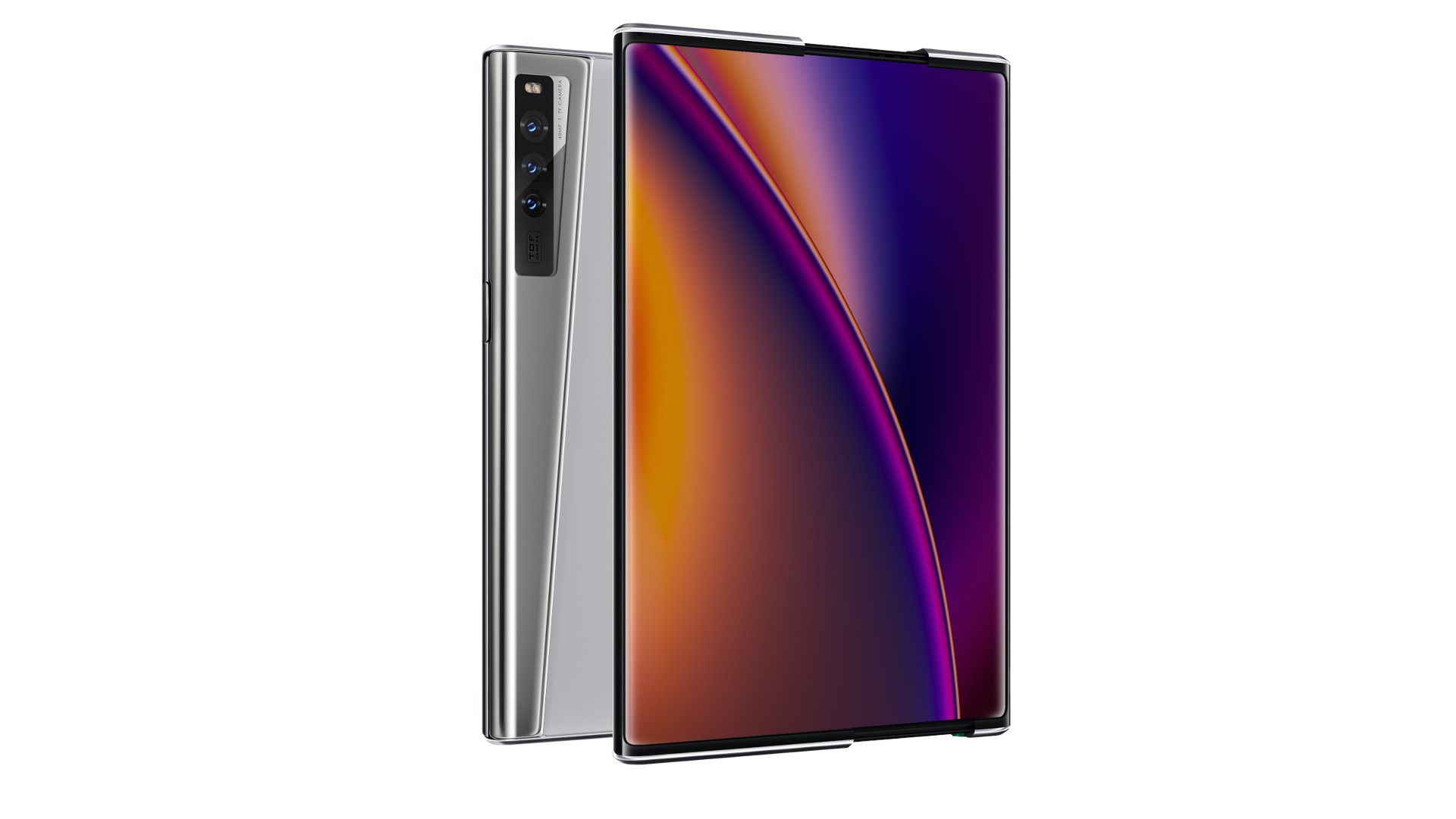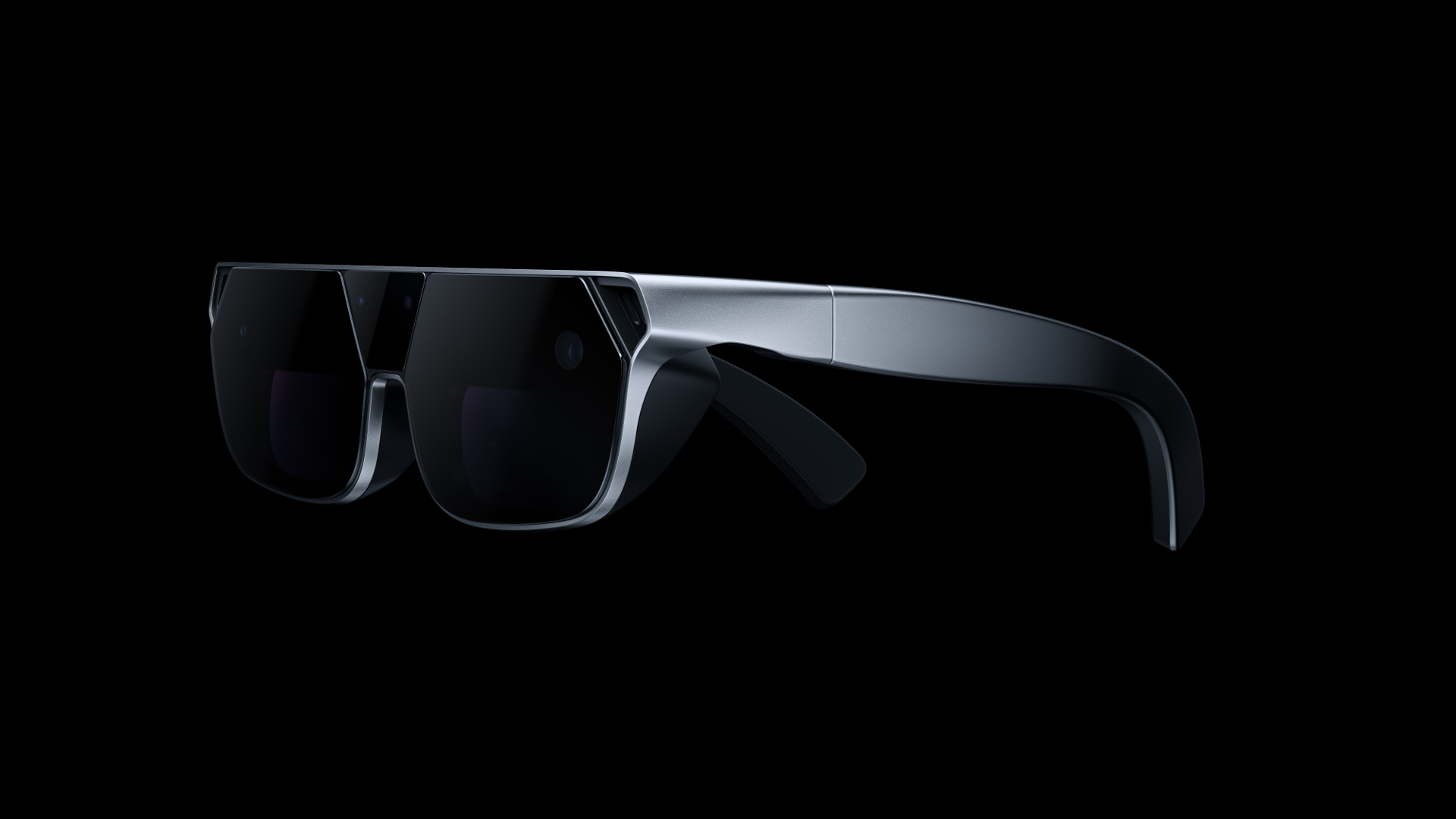Affiliate links on Android Authority may earn us a commission. Learn more.
This rollable smartphone concept gives us a taste of the future
November 17, 2020

- OPPO has shown off three concept products at Inno Day 2020.
- The brand showed off its first rollable phone concept.
- It also showed off redesigned AR Glass and an AR app.
OPPO held its first Inno Day event last year, showing an AR Glass headset and a concept phone with an in-display selfie camera. The firm has now officially kicked off its Inno Day 2020 event, so what did it have to show off this time?
True to the teases, the manufacturer showed off the OPPO X 2021 concept rollable phone. The concept device features a 6.7-inch OLED screen at first, but a gesture on the side fingerprint scanner results in a maximum screen size of 7.4-inches. In fact, the brand claims this solution enables no crease on the display as we see with foldables. A video embedded below shows off the mechanism in action, as well as a USB-C port on the bottom right-hand side of the device.
OPPO says this design is made possible thanks to several technologies it’s incorporated into the device. For starters, the firm is using a “Roll Motor” powertrain consisting of two motors to extend or retract the screen. It claims that a sudden push or pull won’t damage the display due to this tech.
The Chinese brand is also using “Two in One Plate” technology to support the display and prevent it from collapsing. Finally, the firm is using so-called “Warp Track” tech just under the moving screen area. This is akin to a caterpillar track and offers more resilience while the phone display retracts and extends.
It’s unclear if the screen has protective glass or if it’s made out of plastic as we’ve seen with the first Galaxy Fold and HUAWEI Mate foldables. There’s also no word on whether the brand plans to make this product a commercial reality, but we already know LG is working on a rollable phone of its own. LG previously teased the design in September while reports out of Korea point to a March 2021 launch.
We’ve asked OPPO for more details regarding the X 2021’s display and the chances of a commercial release. We’ll update the article if/when they get back to us.
AR Glass returns

The company previously teased a redesigned AR Glass headset that looked sleeker than last year’s pair, and we indeed got a look at this today. The AR Glass 2 headset is slimmer and lighter than the original model, with OPPO claiming that it’s 75% lighter than last year’s model.
The redesigned headset still offers mixed reality and augmented reality features, thanks to a stereo fisheye camera, standard RGB camera, and a 3D ToF sensor. OPPO says the headset allows for interactions via smartphone, gesture-based interactions, spatial localization, and can perform 3D spatial localization in milliseconds. In other words, the brand is touting a more accurate, natural AR experience.
Interestingly enough, OPPO says that users can attach an OPPO Find X2 Pro to the headset via USB-C cable, boosting CPU and GPU performance by up to 40% compared to the first-gen glasses. So what can you actually do with the headset, then?
Well, the manufacturer says you can watch online and local videos in an AR theater, akin to VR headsets. Furthermore, it’s touting the ability to superimpose some games (such as tower defense titles) over the real world, and AR home furnishing via JD.com’s app. OPPO says you can also interact with AR Glass via a paired smartphone, using simple taps and swipes on the mobile device. In other words, this seems similar to the likes of HoloLens and other AR headsets.
An AR navigation app?
The final concept announcement at Inno Day 2020 was OPPO’s CybeReal AR app. This offers precise localization and scene recognition, as well as digital reconstruction. But the brand envisions the app and technology being used for AR-enhanced indoor navigation as well as for marketing in stores. In fact, the AR-enhanced navigation looks a little similar to Google Maps’ AR navigation feature released last year, as the video above shows.
OPPO says the CybeReal AR app uses a combination of GPS, Wi-Fi, network, Bluetooth, cameras, SLAM algorithms, semantic learning, and more to get results. “When the user visits any new places, they will find their location through CybeReal as soon as they open the camera,” the brand explains.